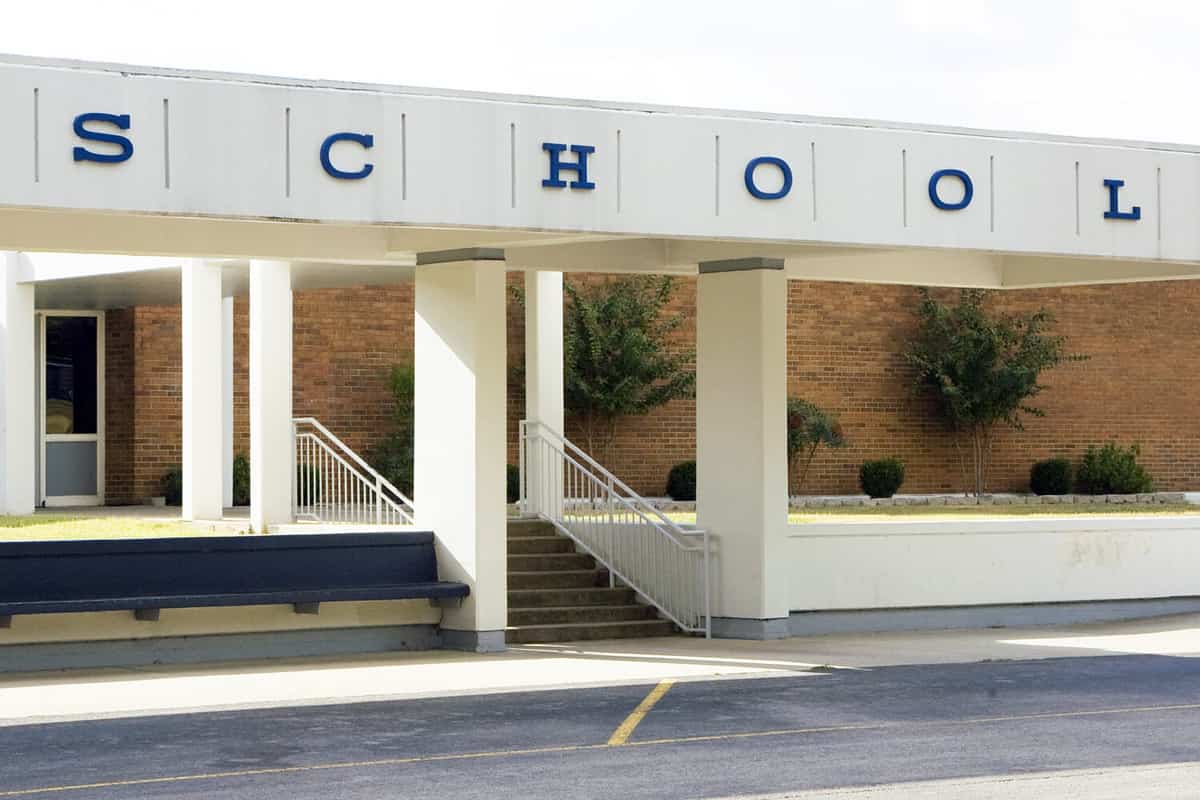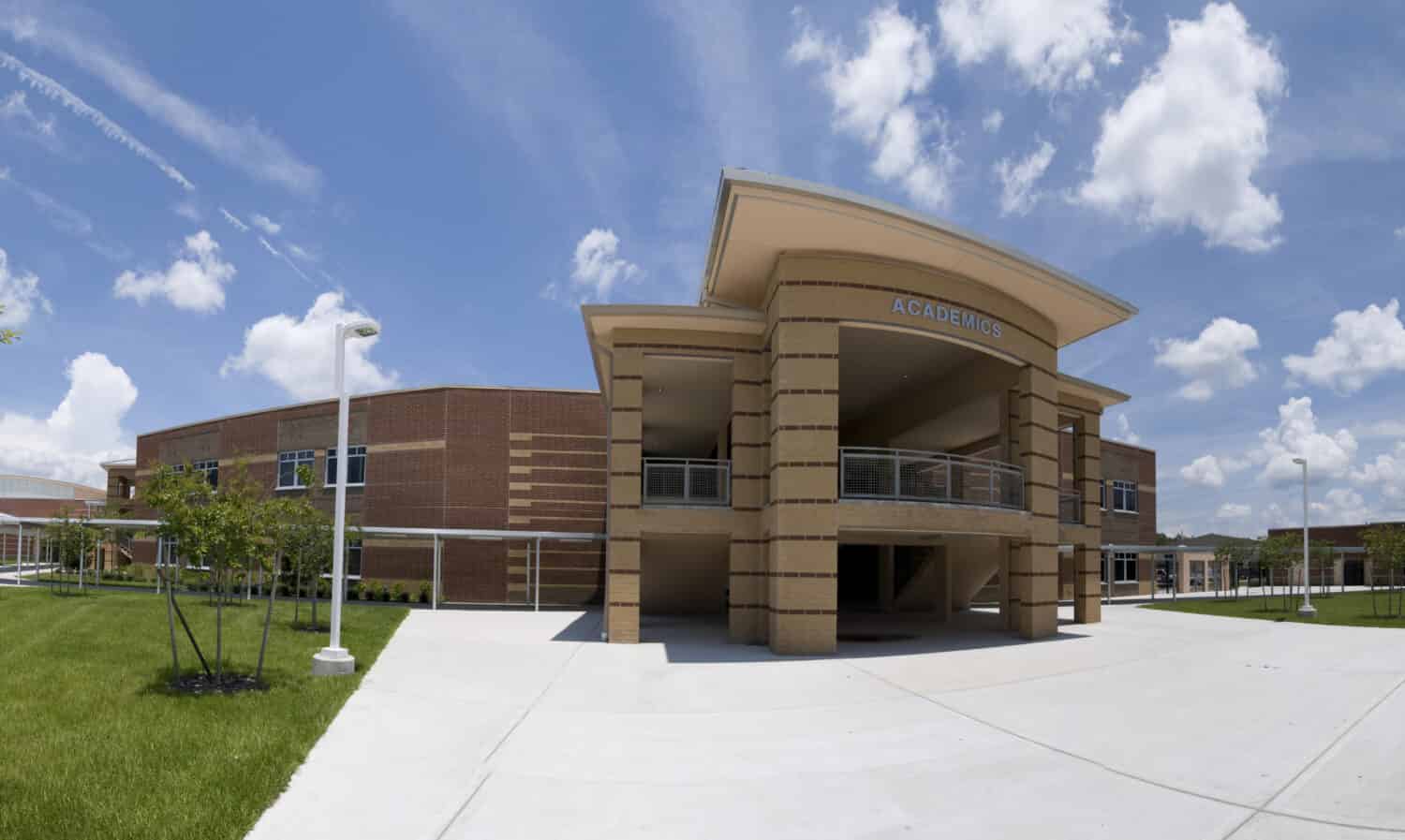The largest school district in Mississippi is Desoto County School District, which serves 34,067 students. Desoto is the largest district by a landslide making up approximately 7.5% of the state's school population. It is followed up by Biloxi Public School District serving 5,952 students and Clinton Public School District serving 5,250. Columbus Municipal School District and Canton Public School District follow behind with an average of 3,250 students.

©https://www.shutterstock.com/g/robertkneschke/Shutterstock.com
1. Desoto County School District
Located in the north-western part of the state, the Desoto County School District has ranked in the top 20% of public school districts in Mississippi for math proficiency, reading and language arts proficiency, graduation rate, diversity, and community size (which is in the top 1%). There are 41 schools in the district that are serving its 34,067 students. The top-ranked schools in the district include Hernando Hills Elementary School, Hernando Middle School, and Hernando High School. Their average student-to-teacher ratio is 16:1 and the district's graduation rate has increased to 92% from 90% in the last five years.

©James R. Martin/Shutterstock.com
2. Biloxi Public School District
Located in the southeastern part of the state, Biloxi Public School District comes in second serving 5,952 students. They rank in the top 20% of public school districts in Mississippi for math proficiency, reading and language arts proficiency, diversity, and community size. In all these categories, they score in the top 10% or higher. There are 10 schools in this district that are serving its almost 6,000 students. The top three ranked schools in order include North Bay Elementary School, Biloxi High School, and Popps Ferry Elementary School. The county's graduation rate has increased to 87% from 84% over the last five years.

©LStockStudio/Shutterstock.com
3. Clinton Public School District
Located near the middle of the state, the Clinton Public School District comes in a close third serving 5,250 students. They rank in the top 20% of public school districts in Mississippi for math proficiency, reading and language arts proficiency, diversity, and community size. In all these categories, they score in the top 5% or higher. There are nine schools in the district and have a student-to-teacher ratio of 18:1. Their top three schools in order included Clinton Junior Hi School, Eastside Elementary School, and Northside Elementary School. The county's graduation rate has decreased by 1% from 91% to 90% over the last five years.

©Ground Picture/Shutterstock.com
4. Columbus Municipal School District
Located on the east side of the state, Columbus Municipal School District serves 3,292 students. This is the first district in the top five largest districts where we really see an academic struggle. This district is ranked in the bottom 50% for math proficiency and reading proficiency. The state's math and reading proficiency average is 35%, Columbus Municipals math proficiency score is 9% and their reading proficiency score is 17%. There are nine schools and their student-to-teacher ratio is 15:1. The district's top three schools in order include Sale Elementary School, Stokes Beard Elementary School, and Cook Elementary School. The county's graduation rate has decreased to 76% from 80% over the last five school years.

©Ground Picture/Shutterstock.com
5. Canton Public School District
Located in the middle of the state, the Canton Public School District serves 3,207 students. It is also ranked in the bottom 50% in math and reading proficiency. Scoring similarly to the Columbus Municipal School District, they score 13% in math proficiency and 18% in reading proficiency (state averages are 35%). There are 10 schools that serve this district and they have a student-to-teacher ratio of 16:1. The district's top three schools in order included Reuben B. Myers Canton School of Arts & Sciences, Huey L. Porter Middle School, and Canton Elementary School. Although they rank low, their graduation rate has increased to 75-79% from 63% over the last five school years.
The image featured at the top of this post is ©Jesse Kunerth/Shutterstock.com.
